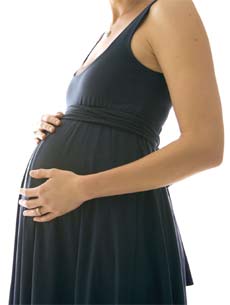|
|
Sunshine Vitamin Deemed Essential For Pregnant Women
 Pregnant women who
have low levels of vitamin D face a five-fold risk of
preeclampsia, a
serious complication during pregnancy which can lead to death of the fetus.
Preeclampsia is marked by soaring
blood
pressure and
swelling
of the hands and feet, and is the leading cause of premature
delivery and
maternal and fetal illness and death worldwide, believed to contribute to 76,000
deaths each year. Preeclampsia is a dangerous condition for pregnant women,
often forcing women to deliver prematurely to protect her
health and the baby�s.
Being a vitamin closely associated with
bone health, vitamin D
deficiency early in life is associated with rickets in children. Pregnant women who
have low levels of vitamin D face a five-fold risk of
preeclampsia, a
serious complication during pregnancy which can lead to death of the fetus.
Preeclampsia is marked by soaring
blood
pressure and
swelling
of the hands and feet, and is the leading cause of premature
delivery and
maternal and fetal illness and death worldwide, believed to contribute to 76,000
deaths each year. Preeclampsia is a dangerous condition for pregnant women,
often forcing women to deliver prematurely to protect her
health and the baby�s.
Being a vitamin closely associated with
bone health, vitamin D
deficiency early in life is associated with rickets in children.
While the actual prevalence of rickets is hard to define, more and more
healthcare professionals are diagnosing cases of vitamin D deficiency. There is
seasonal variation in vitamin D status: it is lowest during winter, when we rely
on body stores and dietary intake to maintain adequate levels. In winter months
at latitudes of 52 degrees north (above Birmingham), there is no ultraviolet
light of the appropriate wavelength for the body to make vitamin D in the
skin.
 It takes only 15 minutes exposure of the arms, head and shoulders in the
sun each day during the summer months to make enough vitamin D for
good
health. Eating foods like oily fish, eggs, fortified cereals and breads
are all sources of vitamin D, but these may still be inadequate when sunshine
hours are limited. At these times pregnant and breastfeeding women and children
under four may benefit from a supplement containing 10 micrograms of vitamin D. It takes only 15 minutes exposure of the arms, head and shoulders in the
sun each day during the summer months to make enough vitamin D for
good
health. Eating foods like oily fish, eggs, fortified cereals and breads
are all sources of vitamin D, but these may still be inadequate when sunshine
hours are limited. At these times pregnant and breastfeeding women and children
under four may benefit from a supplement containing 10 micrograms of vitamin D.
Pregnant and breastfeeding women are recommended to take vitamin D
supplement to ensure babies get the best start in life. Babies tend to receive
vitamin D from their mothers while in the womb, and then from breast milk until
they are weaned. If a pregnant or breastfeeding woman is lacking in
vitamin D,
the baby will also have low vitamin D and calcium levels which can lead babies
to develop seizures in the first months of life.
Women, pregnant as well as lactating are advised to enjoy the sun safely and
prevent sunburn.
Once vitamin D requirements are met, further exposure to sunlight will not
result in any extra health benefits - however, it will increase the risk of
developing
skin cancer.
There are only a few foods that are good sources of vitamin D, so vitamin D
supplements are often recommended unless you are exposed to sunlight on your
skin regularly.
Suggested dietary sources of vitamin D are listed below.
Selected Food Sources of Vitamin D
|
Food
|
International Units(IU)
per serving
|
Percent DV
DailyValue)*
|
Pure Cod liver oil, 1 Tablespoon (Note: most refined cod liver
oils today have the vitamin D removed! Check your label to be
certain.)
|
1,360
|
340
|
Salmon, cooked, 3� ounces
|
360
|
90
|
Mackerel, cooked, 3� ounces
|
345
|
90
|
Tuna fish, canned in oil, 3 ounces
|
200
|
50
|
Sardines, canned in oil, drained, 1� ounces
|
250
|
70
|
Milk, nonfat, reduced fat, and whole, vitamin D fortified, 1 cup
|
98
|
25
|
Margarine, fortified, 1 Tablespoon
|
60
|
15
|
Pudding, prepared from mix and made with vitamin D fortified
milk, � cup
|
50
|
10
|
Ready-to-eat cereals fortified with 10% of the DV for vitamin D,
� cup to 1 cup servings (servings vary according to the brand)
|
40
|
10
|
Egg, 1 whole (vitamin D is found in egg yolk)
|
20
|
6
|
Liver, beef, cooked, 3� ounces
|
15
|
4
|
Cheese, Swiss, 1 ounce
|
12
|
4
|
Vitamin D AI for infants, children, and adults, are listed below in
International Units.
Daily Adequate Intake of Vitamin D
Age
|
Children
|
Men
|
Women
|
Pregnancy
|
Lactation
|
Birth to 13 years
|
200 IU
|
|
|
|
|
14 to 18 years
|
200 IU
|
200 IU
|
200 IU
|
200 IU
|
200 IU
|
19 to 50 years
|
200 IU
|
200 IU
|
200 IU
|
200 IU
|
200 IU
|
51 to 70 years
|
400 IU
|
400 IU
|
|
|
|
71 + years
|
600 IU
|
600 IU
|
|
|
|
Dated 25 December 2012
Related Links
|
|
|
|
|









